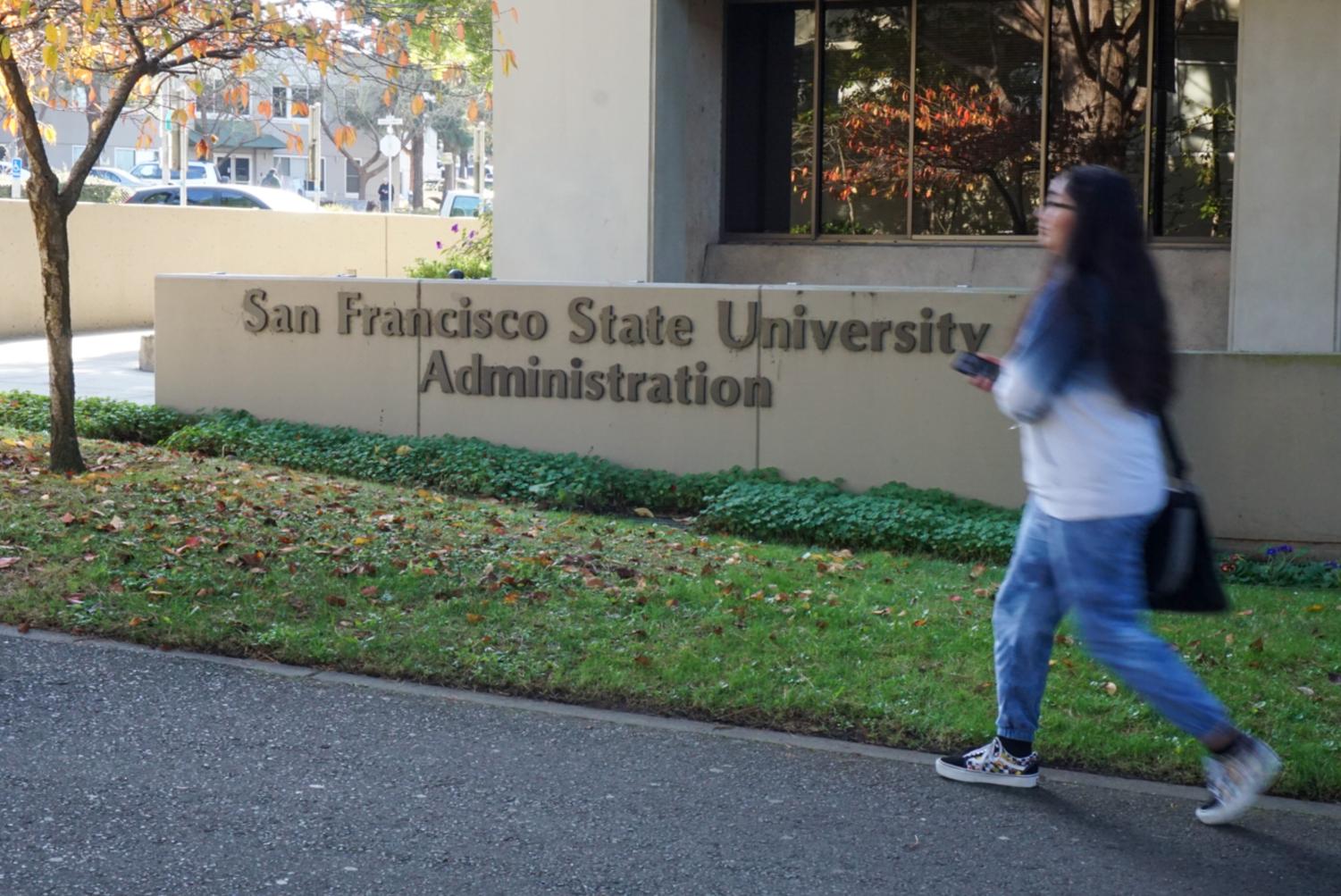




Faculty and students across several departments feel the effects of class cuts.
Dec 7, 2022
SF State cut course availability and increased faculty layoffs in several departments for the Spring semester, which resulted from a steady decline in enrollment since Fall 2019.
“Between the Spring 2022 and Spring 2023 schedules, we had to cut about 15% of our classes,” said Shari Kennedy, a history lecturer at SF State.
Class cuts will not impact every department, but those that are affected have taken steps to prepare where they could.
“We have been consolidating classes as much as we can over the last two years,” said Victor De La Rosa, SF State’s School of Art director. “But we haven’t really been responsive fast enough to the changing demographics of the state, as the entire CSU [Cal State University] system is now competing for a smaller pool of students.”
According to SF State’s Institutional Research unit, SF State reported a total of 28,880 students in Fall 2019. By Fall 2022, that number dropped to 24,461 students, a 15% decrease.
With the decrease in classes, not all lecturer faculty will be able to return to SF State next spring.
“This [upcoming] semester feels different,” Kennedy said. “I’m not entirely sure we’re going to come back from it, since the cuts are more severe.”
Kennedy expressed concerns over the upcoming semester for lecturer faculty given the dwindling course offerings of the History Department.
“We have individuals like myself who have no class to teach next semester,” Kennedy said. “And most of our lecturer faculty will have fewer courses than they had last year or even this semester.”
For non-tenure-track professors, those who are not guaranteed work from semester to semester, class cuts can be extremely concerning.
“We’re at the bottom of the pecking order, us lecturer faculty,” said Steven Harris, a history lecturer at SF State. “There’s a lot of uncertainty, and I would be losing a significant amount of pay as well as health insurance if my courses are cut.”
Kennedy feels uncertain about what the future holds beyond next semester.
“There are so many what-ifs,” Kennedy said. “What if enrollment does not increase? What if the recession doesn’t improve? What if state budgeting does not improve? It’s a hard time right now to work as a faculty lecturer.”
As of November, California was facing a $25 billion deficit after two years of large surplus, according to a report by CalMatters.
“In the decade I’ve been teaching here, these are the most severe cuts I’ve seen,” said Sarah Crabtree, a California Faculty Association union representative and associate history professor. “During the last economic crisis, there were severe cuts, but not at this level.”
Lecturer faculty pay at SF State is barely a livable wage, according to Crabtree. She said CFA discussed a strike for faculty wages in the Spring but did not end up following through with it.
“It’s so confusing that just a year ago we have Gov. [Gavin] Newsom saying we have the largest budget surplus in history,” Crabtree said. “I don’t understand why education just does not seem to be a priority, especially when we have strikes for higher wages for faculty. I’d like to see Newsom step up and do something about this.”
Students have also been feeling the effects of these class cuts.
“I’m seeing classes that weren’t considered under-enrolled in the past now being cut,” said Sue Englander, a lecturer in the History Department. “Students are suffering because they have major requirements to meet that are affected by the cuts.”
Englander, who also taught courses at CCSF, was laid off earlier this year because of similar class cuts.
“We like to offer students a variety of classes,” Englander said. “With the cutbacks, we are not able to do that. We are unable to cover many aspects of Western and U.S. history, and much more.”
According to SF State President Lynn Mahoney, the university anticipates missing its funded enrollment target by 17% for Spring 2023, which will generate over a $10 million deficit as a result of the corresponding decline in revenue.
“We’re being asked to do more with less and everyone is really tired, the faculty and the students,” Crabtree said. “It impacts the relationship among students, staff and faculty. I’m worried about the moral, collegiality and camaraderie.”
According to Crabtree, the class budget cuts from administration have not been equal.
SF State’s administration did not reply for comment.
“Both students who are not able to enroll in certain classes and faculty who cannot get classes to teach next semester is part of a statewide, if not nationwide, attack on university budgets,” Englander said.
Jackson Gravagno, a senior double-majoring in political science and cinema, said the class cuts in the cinema department have upset many students and faculty.
“Lots of production courses that are highly applicable to the trade and career path are being cut,” Gravagho said. “Many of these are skills-based classes that students have taken prerequisites for and been looking forward to. And all of a sudden it’s gone.”
Gravagno is a transfer student and was eager to study in SF State’s Cinema Program, which bolstered many opportunities at a relatively affordable price.
“It has been really inspiring to see people [cinema students] genuinely excited to be learning and working in the arts,” Gravagho said. “But now it’s been very discouraging to see some of these classes and excitement go away.”
Lack of advising is a crucial factor behind falling enrollment and class cuts, as cited by several department chairs.
“Students should be going to advising as soon as they start at SF State and returning every semester,” De La Rosa said. “By establishing a flow of communication between students, faculty and administration, we can get more students to return each semester and graduate on time.”
As the Spring 2023 semester approaches, the Department of English Language and Literature has been reaching out to students directly in an attempt to boost student engagement and ensure their return.
“If we aren’t reaching our desired fill rate of our classes and enrollment is low, faculty members, coordinators and department chairs will take action,” said Maricel Santos, the Department Chair of ELL. “The staff here will get on the phone or email to reach out to students to inform them of the courses available and to try to help motivate them to come back.”
Mahoney said in an email to SF State faculty that the university budget challenges will not affect the levels of student participation in campus life, as well as academic performance.
“We are doing our best to resist these cutbacks,” Englander said. “We’re super committed because once we allow these changes to happen, they won’t go away.”



Robert Lee • Feb 23, 2023 at 9:47 am
It is a shame that higher management MPP is still maintaining a high pay salary while cutting jobs for long-term employees. This decision is not only unfair, but it also has a negative impact on the morale of the employees who have been loyal to the company for many years. It is important for companies to recognize the value of their long-term employees, and to reward them for their commitment and hard work.